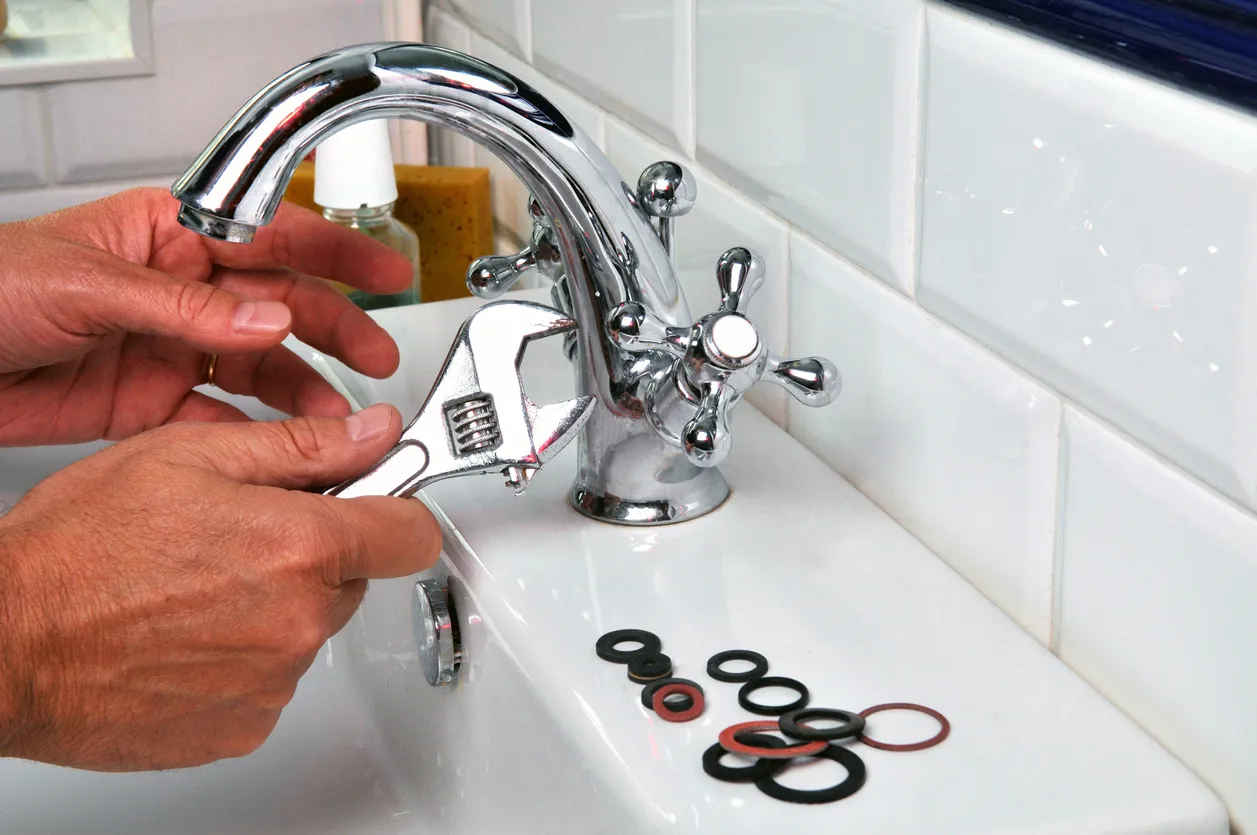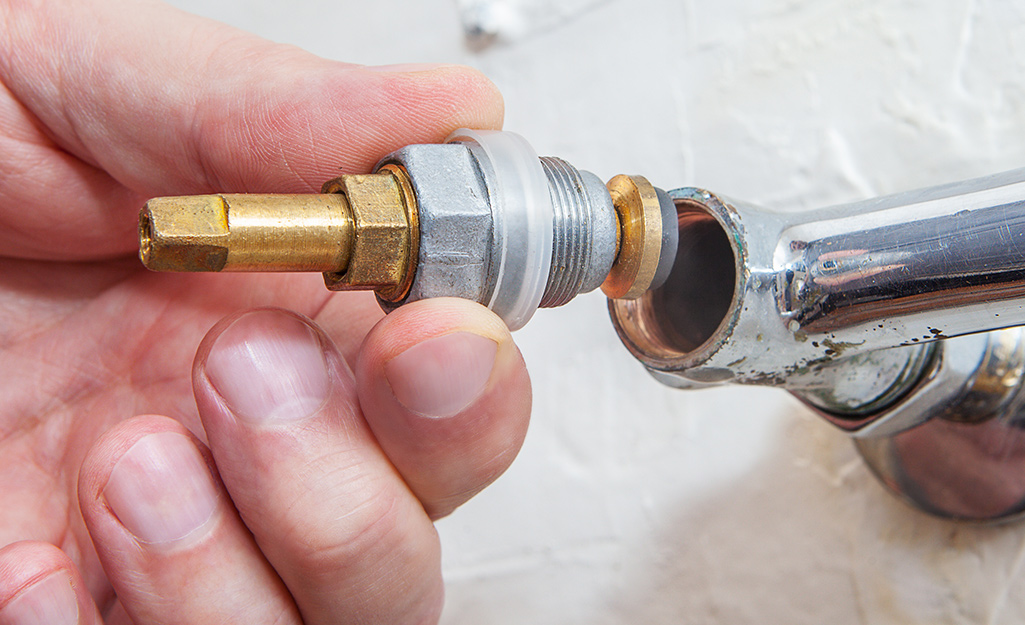Reasons Why It's Critical to Mend a Faulty Faucet
Reasons Why It's Critical to Mend a Faulty Faucet
Blog Article
Listed here in the next paragraphs you'll find a lot of professional answers pertaining to Leaky Faucets: Why They Happen & What to Do About Them.

Dripping faucets may appear like a small inconvenience, however their effect goes beyond just the nuisance of the audio. From drainage to sustaining unnecessary financial costs and health and wellness dangers, neglecting a trickling tap can lead to different repercussions. In this post, we'll look into why it's crucial to address this common household issue quickly and efficiently.
Waste of Water
Ecological Effect
Trickling taps add dramatically to water wastefulness. According to the Epa (EPA), a solitary tap leaking at one drip per second can squander more than 3,000 gallons of water annually. This not only strains water resources however also impacts communities and wild animals dependent on them.
Financial Prices
Enhanced Water Bills
Beyond the ecological influence, dripping taps can pump up water expenses substantially. The gathered wastage over time converts right into greater energy expenditures, which can have been stayed clear of with timely repairs.
Possible Residential Property Damages
Furthermore, prolonged leaking can cause harm to fixtures and surfaces surrounding the faucet. Water accumulation can cause discoloration, corrosion, and also architectural issues if left neglected, leading to additional repair costs.
Wellness Problems
Mold And Mildew and Mildew Development
The constant presence of dampness from a leaking faucet develops an ideal atmosphere for mold and mildew growth. These fungi not only compromise indoor air top quality yet also position wellness risks, particularly for people with breathing problems or allergies.
Waterborne Illness
Stationary water in leaking taps can end up being a breeding place for germs and various other microorganisms, increasing the threat of waterborne diseases. Impurities such as Legionella microorganisms prosper in stagnant water, possibly resulting in significant health problems when ingested or inhaled.
DIY vs. Professional Repair service
Pros and Cons of Do It Yourself Repair Service
While some may try to fix a leaking faucet themselves, DIY fixings feature their very own set of challenges. Without proper knowledge and tools, DIY efforts can aggravate the problem or bring about insufficient repair services, prolonging the trouble.
Benefits of Hiring an Expert Plumber
Hiring a professional plumber guarantees that the underlying source of the trickling tap is addressed properly. Plumbing professionals possess the expertise and tools to diagnose and repair tap problems successfully, saving time and decreasing the risk of more damages.
Step-by-Step Overview to Taking Care Of a Dripping Tap
Tools Required
Before trying to repair a leaking faucet, collect the required tools, consisting of a flexible wrench, screwdrivers, substitute components (such as washing machines or cartridges), and plumber's tape.
Usual Faucet Issues and Their Solutions
Identify the sort of tap and the specific problem creating the drip. Common issues include worn-out washers, rusty shutoff seats, or damaged O-rings. Refer to maker guidelines or on-line tutorials for step-by-step advice on repair work.
Safety nets
Regular Upkeep Tips
To stop trickling faucets, carry out routine maintenance such as cleaning aerators, examining for leakages, and changing worn-out parts promptly. Furthermore, consider mounting water-saving gadgets or upgrading to a lot more reliable components.
Significance of Prompt Services
Dealing with trickling taps as soon as they're discovered prevents more water waste and potential damages, eventually saving both water and cash in the future.
Effect On Home Worth
Assumption of Well-Maintained Property
Preserving a residential or commercial property in good condition, including resolving upkeep issues like leaking taps, improves its regarded value and charm amongst prospective customers or renters.
Impact on Resale Value
Qualities with well-kept plumbing components, including taps, command higher resale values in the realty market. Resolving leaking taps can contribute to a positive perception during home inspections and negotiations.
Ecological Responsibility
Private Payment to Preservation
Taking duty for fixing dripping faucets straightens with more comprehensive initiatives towards water conservation and environmental sustainability. Every individual's actions collectively make a significant influence on preserving valuable sources.
Lasting Living Practices
By prioritizing punctual repair services and embracing water-saving practices, individuals add to lasting living methods that profit both present and future generations.
Verdict
Addressing a trickling tap surpasses simple benefit; it's an essential action towards conserving water, decreasing financial costs, and guarding health and residential or commercial property. Whether through do it yourself fixings or expert assistance, doing something about it to deal with dripping taps is a tiny yet impactful method to advertise responsible stewardship of sources and contribute to a much healthier, a lot more lasting future.
How to Fix a Dripping or Leaky Faucet
A leaking faucet is one of the most common problems that homeowners encounter, but it being commonplace doesn’t make it any less annoying. The constant drip drip drip of a leaking bathtub faucet, showerhead, or sink tap can disturb your home’s serenity. Left neglected, a dripping faucet can also result in higher water bills and discoloration or mold growth in your sink or plumbing fixtures.
Fortunately, you don’t have to be a trained plumber to know how to stop a dripping faucet. With some basic tools, replacement parts, and a little patience, leaky faucet repair is a breeze. In this article, we’ll explain what causes dripping faucets and how you can fix them.
What Causes a Leaking Faucet?
Kitchen and bathroom faucets come in all manner of designs, but most involve some combination of valves, O-rings, seals, and washers. The O-ring is usually the weakest link, but any one of these pieces can wear down over time. Heat, moisture, temperature fluctuations, minerals, mold, and movement can contribute to warping and corrosion, breaking the watertight seal. This just comes with the territory of being a homeowner. Everything is always subject to wear and tear, and some component parts of your appliances and fixtures need to be replaced on occasion. At least replacement O-rings are cheap!
More rarely, dripping faucets can be a symptom of excessively high water pressure. Were this the case in your home, you would probably notice that the leak is not isolated to one faucet. Water pressure issues are harder to resolve on your own. We recommend contacting a professional plumber if you suspect your water pressure is too high.
How to Fix a Dripping Faucet
Pipe wrench or monkey wrench Allen wrench set Screwdrivers Old towel or rag Shut off the water.
Before you do anything, you need to turn off the water to keep from drenching your kitchen or bathroom. You should find a valve under the sink and against the wall. Once you’ve turned this valve, try turning the faucet on to confirm that the water source has been cut off.
If you can’t locate your local valve for the faucet you’re working on, you can always shut off the water to the house at the main valve. Of course, this will prohibit anyone from using the sinks, showers, or toilets while you’re working on the faucet that’s giving you trouble.
Plug or block the drain.
You’ll be disassembling the faucet and removing some small bits of hardware. Plug the drain with a stopper or rag to avoid the possibility of a small screw falling into your P-trap.
Take apart the faucet assembly.
There are several varieties of kitchen and bathroom faucets, each with its own manner of assembly. For detailed instructions on how to disassemble your faucet, you can refer to the fixture’s manual or contact the manufacturer. If you know whether you have a ball, disc, cartridge, or compression faucet, you can find detailed schematics online.
In general, you need to begin by removing the faucet handles. You might notice a small screw that you’ll need to remove with a screwdriver or Allen wrench. If you don’t see any visible securing hardware, it’s likely hidden under a decorative cap that can be unscrewed or popped off with flathead screwdriver.
Remove each piece methodically, consulting a schematic when necessary. Take notes or arrange the pieces in such a way to make it easier to correctly reassemble the faucet later.
Remove the cartridge.
Once you’ve removed the handles and securing hardware, you should be able to remove the valve cartridge or stem. Some cartridges will slide right out. Other faucet models will require you to loosen a nut with a pipe wrench before you can remove the valve stem.
Examine the exposed hardware.
With the cartridge or stem removed, inspect the component parts. Check the rubber O-rings for wear and tear. Also examine the seat washer for corrosion or other damage. These pieces are usually the responsible parties for a dripping faucet, but it’s worth inspecting the other component parts while you have the faucet disassembled.
Find replacement parts.
Once you’ve identified which faucet component has failed, find an identical replacement. Your local hardware store should have O-rings, seat washers, and other standard components in stock. If you have a luxury or uncommon faucet, you may have to contact the manufacturer for a replacement part.
It’s a good idea to take your old parts with you to the hardware store so you can compare them with the store’s inventory and be sure you’re purchasing the correct replacement.
Reassemble the faucet.
With your new parts in hand, reconstruct the faucet and handles. Don’t be tempted to overtighten screws or nuts. You might think this could create a better seal, but it can instead damage or bend a delicate part of the assembly and create a new problem for you.
Turn on the water and test the faucet.
The only thing left to do is test your work. Unplug the sink, turn the water back on, and try the faucet. Congratulate yourself on a job well done!
https://www.libertyhomeguard.com/how-to-fix-a-dripping-or-leaky-faucet/

I'm certainly very interested in 4 Common Reasons for a Leaky Faucet and I am praying you enjoyed reading our blog posting. Sharing is nice. Helping people is fun. Thanks so much for your time invested reading it.
Report this page